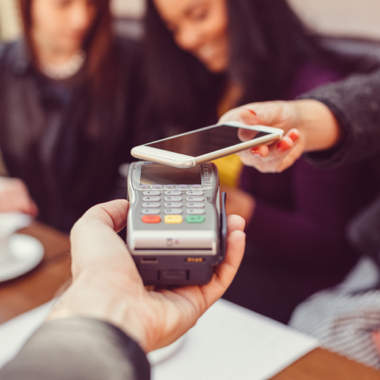
- Five minutes read
PSD2 and Gen Z: Shaping the next generation of payments
Gen Z is a larger demographic in the US than Millennials. They also look set to become economically more powerful than their predecessors
It seems incredible, but the younger siblings of Millennials are now all grown up. Born from the mid-1990s onwards, the first wave of the so-called Generation Z, are closing in on their mid-twenties.
At 26% of the media consuming population, Gen Z is a larger demographic in the US than Millennials, who make up 22%. They also look set to become economically more powerful than their predecessors: by 2020, it’s thought they’ll make up 40% of all consumers. So what does that mean for payment services providers moving forward?
Generation Z: the true digital natives
If Millennials grew up during the rise of the internet, then Gen Zers don’t know life without it. Google, Amazon, early social networks, and mobile phones already existed when they were born; they’ve been part of Gen Zers’ everyday lives from a tender age.
A generation accustomed to an unprecedented level of access and technologically-assisted self-reliance, Gen Zers are naturally a generation of early adopters of the tech hitting the market today. Whether they want knowledge, entertainment, connections with fellow human beings, or services, the expectation is that this can be accessed by a single a click, button or swipe.
Simultaneously, living in a world of constant information overload has taught them to tune out at an early age. Put bluntly, Gen Z doesn’t have much appetite for assessing whether something is worth their time. It’s up to those who want their attention to earn it. They’re also more concerned about online privacy than Millennials, having learned about the consequences by observing their parents and older siblings.
More than just ‘Millennials on steroids’
It’ll come as no surprise that Gen Z is the age demographic most enthusiastic about the potential of technology. Smartphones are central to their lives, with 73% saying they use their device at least once an hour. And 48% have at least one finance or payment app on their phone.
More to the point, Gen Zers are so used to a reliance on digital technologies that they don’t distinguish between online and offline.
They love in-store experiences and visit bank branches more often than baby boomers. But they’re also the consumers most likely to browse their phones for better deals, even while they’re in a physical store. And they’re the generation most receptive to developments such as frictionless payments, virtual reality and biometrics. So much so, that 70% would like to see biometrics replace passwords and PINs completely by 2020.
That said, the constant sense of cultural and financial instability they were born into has also made Gen Zers socially responsible and highly conscientious.
Case in point, they’re a generation of savers, with 12% saying they’ve already started putting money away for retirement. And they continually strive to be part of the solution. Or, to put it another way, they live their lives carrying “...the weight of saving the world and fixing our past mistakes on their small shoulders.”
Serving Generation Z
Serving Gen Z starts by accepting that mobile technology isn’t a nice-to-have for these consumers; it’s everyday life. Gen Zers have always lived in a hyper-connected digital world, so they don’t know any other way. As a result, they’ve come to expect the simplicity, access and convenience this brings with it as a matter of course.
When it comes to money and commerce and finances, it’s likely that Gen Zers’ dependence on mobile apps will only increase as they grow older and their financial needs become more complex. They won’t use apps just to make payments. They’ll also expect to use them to save money, stay on top of their spending and, eventually, to take out a mortgage or reach other important long-term financial goals.
That said, their penchant for filtering things out means they won’t give their loyalty by default. To attract and retain their loyalty, businesses will need to move beyond product and start thinking about creating overarching experiences that resonate with their values and expectations.
If this sounds challenging, it’s because it is. But, as it happens, we’ve never been better equipped to take this challenge on.
Moving forward: PSD2 as an opportunity
Much has been made of PSD2 and what it means for payments moving forward. But what’s for sure is that, by making consumer information available to third party providers (subject to consent), it has made it easier to enhance payment products so they’re more appealing to Gen Z.
From money dashboards to alternative lending, investments and loyalty bonuses, payment services providers can now use previously unavailable information to create a more appealing user experience. One that gives Gen Zers real time access to their entire financial health at a glance whilst feeding into their need for flexibility and empowerment.
More to the point, by monitoring and learning from users’ behaviours, payment service providers can develop even more highly personalised experiences. Services that not only give Gen Zers they want, but actually anticipate and deliver on their ever evolving needs.
In summary
It’s safe to say that Gen Z is unlike any other generation before it. They’re probably the most well-informed, the most tech-savvy and the most financially-educated generation yet. And they’ll pass on anything they don’t consider worthwhile out of hand.
For payment services providers, this means it’s time to up the ante. While Gen Z will undoubtedly keep using technology, their loyalty isn’t a given and will have to be earned through the delivery of value in the form of, as BBVA puts it: solving needs, giving back time and reducing stress for consumers in their busy lives. PSD2 and an array of rapidly evolving technologies, such as AI and biometry, are giving us the tools to face up to this challenge. But, ultimately, it’s up to us to create the more connected, flexible and socially responsible financial products Gen Zers crave.




